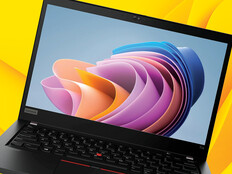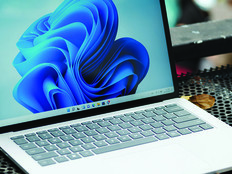When the Going Gets Tough
There are many definitions of mobile computing.
Like automobiles, most notebook computers and mobile devices can go almost anywhere in the world, but not necessarily “off road.” For many notebooks, the rigors of fieldwork exceed their durability.
For such uses, you need something more rugged. And in places where no other notebook would dare to go, the leader is still the Panasonic Toughbook 30 — the first commercial notebook to receive independent certification for MIL-STD-810G, the latest military specification for operations in extreme environmental conditions.
Advantages
The Toughbook’s hard, weather-resistant construction is built to take punishment and keep running smoothly. In my tests, vibration and sudden movements had no effect on its operations. The computer is also designed to withstand 6-foot drops (while turned off) and still operate normally.
The Toughbook is also water-resistant. Rain and mist can be simply wiped away, and the keyboard is spill-resistant. Plus, rubberized covers for its USB, modem, serial and Ethernet ports — and sliding doors for access to other interfaces and storage bays — keep dust and moisture at bay during untethered outdoor use.
I grabbed the integrated magnesium alloy hand strap and hauled the Toughbook into the cold, cruel world to try out some real-world applications, including word processing and spreadsheets, accessing geospatial data and basic data collection.
At 20 degrees Fahrenheit, the conditions under which I tested the Toughbook were not overly extreme, but they were still outside the operating parameters of most notebooks (yet inside those for many feds who work in the field). The built-in hard drive heater ensures that cold temperatures don’t crash the hard drive.
Why It Works for IT
Underneath its rugged exterior, the Toughbook is a fairly solid Microsoft Windows–based PC. The version I evaluated came loaded with a fully battle-tested Windows XP Business operating system.
The notebook includes 802.11g Wi-Fi, but you can also get optional Gobi wireless broadband. The external antenna extended the range of the connection considerably. And using the built-in Bluetooth connectivity, I was able to connect to my 3G phone as a network access device using Bluetooth Personal Area Networking.
The ruggedized features make for a low failure rate. And the 160-gigabyte hard drive is shock-mounted and removable, so you can swap out drives without taking the whole system apart.
It also comes with several integrated options for add-on devices and removable media. There are slots for PC Card and ExpressCard devices and a port for plugging in Secure Digital flash memory. There’s also what Panasonic calls a “multi-media pocket” for inserting an optional combo or DVD super-multi drive — or, if you’re not in need of optical storage access, you can slide in a second battery.
There are plenty of security options, too. The Toughbook 30 has a fingerprint reader and smart-card options for user authentication. It can also use the Trusted Platform Module for remote identification of the system over a network (“remote attestation”) and full-disk encryption when combined with software.
Disadvantages
The Toughbook — like a Hummer — is not for everyone. Most office-bound users, who take their systems to meetings or conferences, will not need the features of the Toughbook 30.
There are also some trade-offs to ensure functionality in extreme environments. For instance, the display, while bright, doesn’t offer the depth of colors or high resolution of less-rugged notebooks.
But, in general, if you need the kind of versatile durability that the Toughbook provides, you can expect it to handle just about any task you throw at it. Just be careful not to drop it on your feet — at 8.4 pounds, it’ll probably do more damage to your toes than it will suffer.







